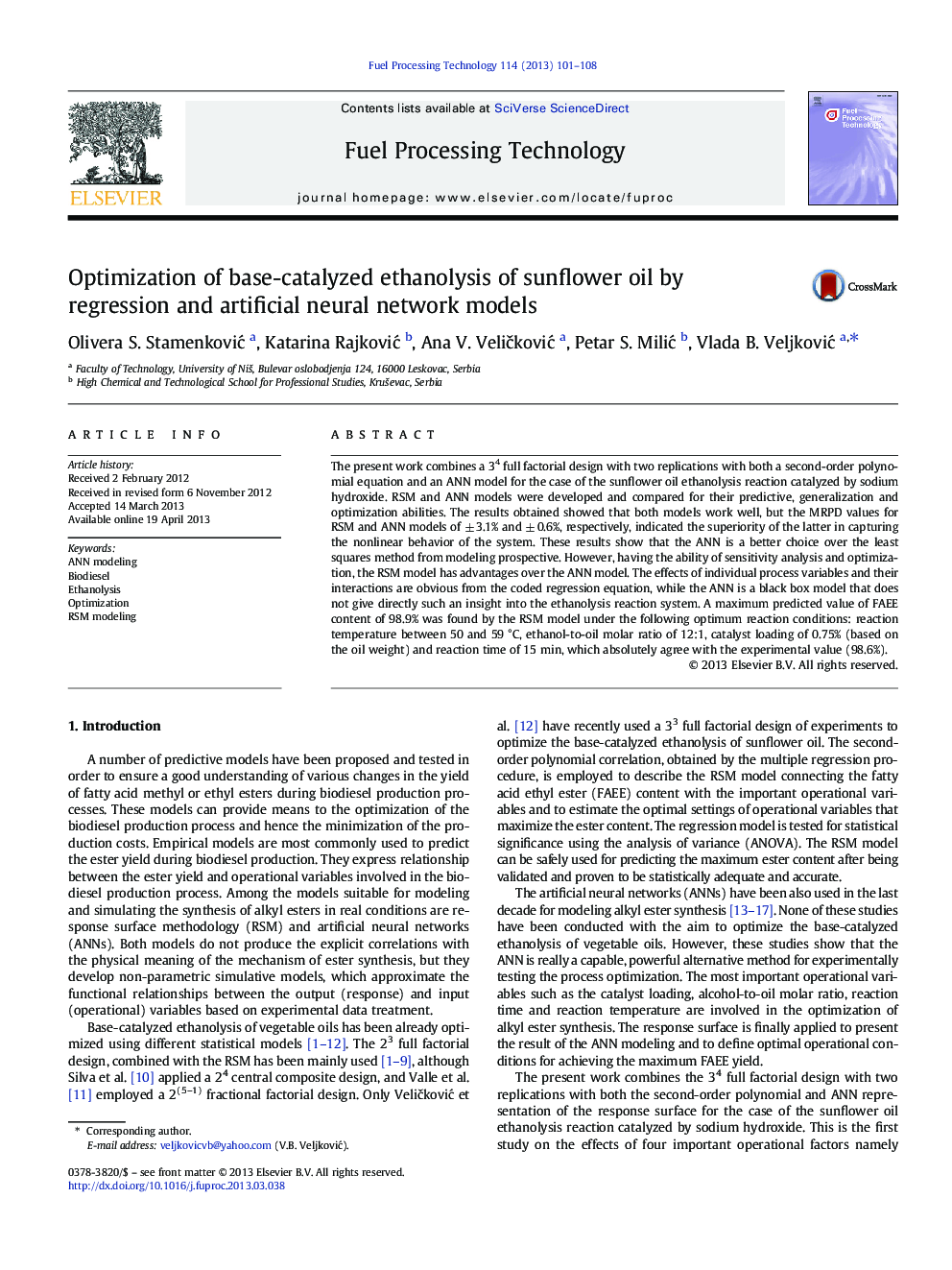| کد مقاله | کد نشریه | سال انتشار | مقاله انگلیسی | نسخه تمام متن |
|---|---|---|---|---|
| 209936 | 461692 | 2013 | 8 صفحه PDF | دانلود رایگان |

• Optimization of NaOH-catalyzed ethanolysis by RSM and ANN models based on DOE
• Comparison of prediction, generalization and optimization of RSM and ANN models
• Superiority of ANN in capturing the nonlinear behavior of the system
• ANN is a better choice over RSM from a modeling prospective.
• Having ability of sensitivity analysis and optimization, RSM has advantages over ANN.
The present work combines a 34 full factorial design with two replications with both a second-order polynomial equation and an ANN model for the case of the sunflower oil ethanolysis reaction catalyzed by sodium hydroxide. RSM and ANN models were developed and compared for their predictive, generalization and optimization abilities. The results obtained showed that both models work well, but the MRPD values for RSM and ANN models of ± 3.1% and ± 0.6%, respectively, indicated the superiority of the latter in capturing the nonlinear behavior of the system. These results show that the ANN is a better choice over the least squares method from modeling prospective. However, having the ability of sensitivity analysis and optimization, the RSM model has advantages over the ANN model. The effects of individual process variables and their interactions are obvious from the coded regression equation, while the ANN is a black box model that does not give directly such an insight into the ethanolysis reaction system. A maximum predicted value of FAEE content of 98.9% was found by the RSM model under the following optimum reaction conditions: reaction temperature between 50 and 59 °C, ethanol-to-oil molar ratio of 12:1, catalyst loading of 0.75% (based on the oil weight) and reaction time of 15 min, which absolutely agree with the experimental value (98.6%).
Journal: Fuel Processing Technology - Volume 114, October 2013, Pages 101–108